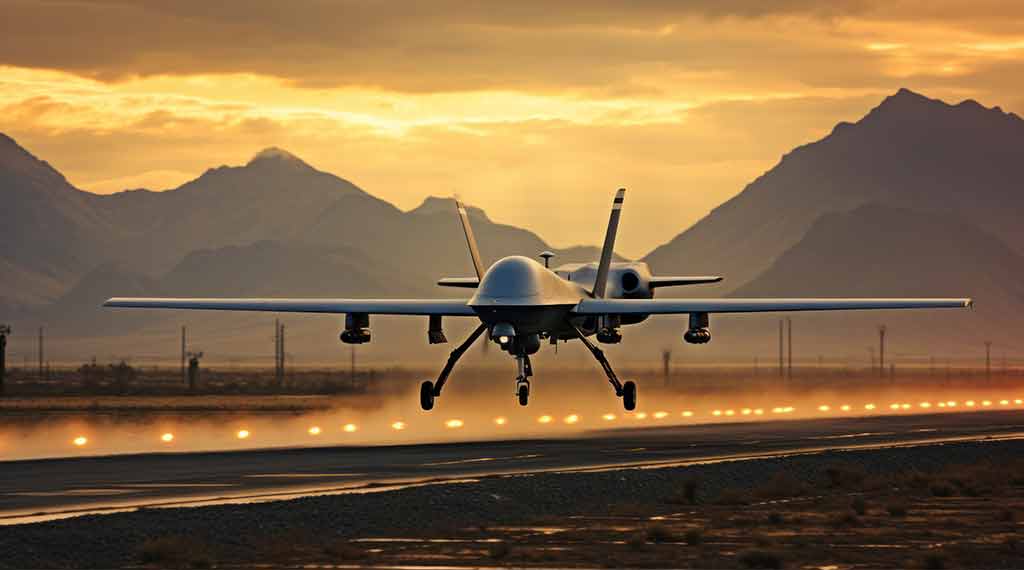Air Force moving Reaper squadron in Japan south to Okinawa

Editor’s Note: This piece by Seth Robson features quotes from CSP Senior Fellow, Grant Newsham.
YOKOTA AIR BASE, Japan – A U.S. Air Force squadron of MQ-9 Reaper drones is moving south to Okinawa from the Japanese island of Kyushu, according to a spokesman at this airlift hub in western Tokyo.
Eight Reapers and more than 150 airmen in the newly formed 319th Expeditionary Reconnaissance Squadron are finishing a yearlong deployment to Kanoya Air Base, a Japan Maritime Self-Defense Force base near the southern tip of Kyushu, the southernmost of Japan’s four main islands.
“We can confirm that the U.S. Pacific Air Forces plans to deploy MQ-9s and U.S. personnel from Japan Maritime Self Defense Force Kanoya Air Base to Kadena Air Base,” 1st Lt. Danny Rangel, a spokesman for the 374th Airlift Wing, said in an email Friday evening.
The aircraft headed to Kadena, a fighter base on Okinawa, will conduct airborne reconnaissance in coordination with Japan’s Ministry of Defense, he said.
The Air Force is not releasing the dates when personnel and aircraft will move, for security reasons, Rangel said.
“We will continue to closely coordinate with the government of Japan on this deployment,” he said.
A spokesman for Japan’s Ministry of Defense said Friday that officials could answer questions about the move next week. Some Japanese government officials may speak to the media only on condition of anonymity.
Japan, concerned about a Chinese military buildup and threats to invade Taiwan, has been boosting its defense capabilities on its southern island territories.
The two countries’ coast guards spar frequently at the Senkakus, a string of five uninhabited islands and three rocks 280 miles west of Okinawa, that are administered by Japan but claimed by Taiwan and China, which refer to them as Diaoyu Dao..
It’s usually better for military forces to be based closer to their area of operations, according to Grant Newsham, a retired Marine colonel and senior researcher with the Japan Forum for Strategic Studies in Tokyo.
From Kyushu the Reapers could operate far south of Japan, he said by email Friday.
“There’s a political benefit to operating in Okinawa,” Newsham said. Such a move suggests Japan’s government is willing to absorb criticism from anti-American groups on the island, he said.
“They will accuse Tokyo of increasing the ‘burden’ on Okinawa, making it more of a target, militarizing the place even more,” he said.
Pacific Air Forces describes the Reaper as medium-altitude, long-endurance, remotely piloted aircraft.
The drone is primarily a surveillance aircraft but can carry an inventory of weapons, including Hellfire missiles and Paveway laser-guided bombs, according to the Air Force.
The drones at Kanoya are configured for surveillance “and can’t be equipped with weapons,” according to a document from Japan’s Ministry of Defense posted on the Kanoya city website.
The Reapers, made by General Atomics of San Diego, can carry 3,000 pounds of ordnance; they first saw combat in Afghanistan in 2007 and then in Iraq the following year. The U.S. has employed them on numerous missions throughout the Middle East and Africa.
The Air Force began deploying RQ-4 Global Hawk surveillance drones to Misawa Air Base in northern Japan in 2014 and has flown them out of Yokota in recent years. The Navy deployed its MQ-4C Triton maritime surveillance drones to Misawa last year and to Marine Corps Air Station Iwakuni, south of Hiroshima, last year.
- China, Look at the Numbers: Japan Threatens Nobody - December 8, 2025
- Newsham Breaks Down Latest China–Japan Standoff Near Senkakus Islands - December 4, 2025
- China’s Act of War Against PM Takaichi and Japan - November 24, 2025
